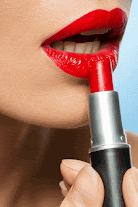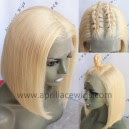Wigs have long been a versatile accessory, offering individuals the opportunity to experiment with different hairstyles, colors, and looks without making permanent changes to their natural hair. Whether you wear wigs for medical reasons, fashion, or simply for the fun of it, one thing remains constant: proper care is essential to keep your wigs looking their best. In this comprehensive guide, ""Caring for Your Wigs: Essential Maintenance Tips"," we'll explore the ins and outs of wig maintenance. From cleaning and styling to storage and protection, we'll provide you with all the tips and tricks you need to ensure your wigs stay in top condition for a long time.
Section 1: Types of Wigs and Their Materials
Before delving into wig care, it's crucial to understand the various types of wigs and the materials they are made from, as care routines may vary based on these factors.
1.1 Synthetic Wigs
- Explanation of synthetic wig materials.
- Advantages and disadvantages of synthetic wigs.
- Care tips specific to synthetic wigs.
1.2 Human Hair Wigs
- Explanation of human hair wig materials.
- Advantages and disadvantages of human hair wigs.
- Care tips specific to human hair wigs.
1.3 Blended Wigs
- Explanation of blended wig materials.
- Advantages and disadvantages of blended wigs.
- Care tips specific to blended wigs.
1.4 Lace Front Wigs
- Explanation of lace front wig construction.
- Advantages of lace front wigs.
- Care tips specific to lace front wigs.
Section 2: Cleaning Your Wigs
Proper cleaning is a fundamental aspect of wig care. In this section, we'll outline the steps for cleaning your wigs, whether they are synthetic, human hair, blended, or lace front.
2.1 Washing Your Wigs
- Materials needed for wig washing.
- Step-by-step guide to washing your wigs.
- Recommended wig shampoo and conditioner.
2.2 Drying Your Wigs
- Proper wig drying techniques.
- Air drying vs. blow drying.
- Wig stands and drying methods.
2.3 Maintaining Wig Hygiene
- Tips for maintaining cleanliness between washes.
- How often should you wash your wigs?
- Handling sweat and odor issues.
Section 3: Styling Your Wigs
Styling wigs allow you to change your look effortlessly. In this section, we'll explore various wig styling techniques and how to safely style your wigs.
3.1 Heat Styling
- Using heat styling tools on synthetic vs. human hair wigs.
- Recommended heat settings and protection products.
- Cautions and tips for successful heat styling.
3.2 Restyling Your Wigs
- Restoring the original style of your wig.
- Creating new looks through restyling.
- Step-by-step guide to restyling wigs.
3.3 Wig Accessories
- The role of wig accessories (combs, brushes, hairpins).
- Choosing the right accessories for your wig type.
- How to brush and detangle wigs without damaging them.
Section 4: Protecting Your Wigs
Preserving the quality and longevity of your wigs requires proper protection. We'll discuss how to protect your wigs from various potential hazards.
4.1 Sun and UV Protection
- The impact of sunlight and UV rays on wigs.
- Recommended storage methods to avoid sun damage.
- UV protectant sprays for wigs.
4.2 Environmental Factors
- Protecting wigs from humidity, dryness, and extreme temperatures.
- Storing wigs away from pollutants and dust.
- Wig-friendly storage solutions.
4.3 Safe Traveling with Wigs
- Tips for packing and traveling with wigs.
- Avoiding damage during flights and road trips.
- Emergency wig care while traveling.
Section 5: Wig Storage
Proper storage is essential to maintain the shape and quality of your wigs. In this section, we'll explore the best practices for wig storage.
5.1 Wig Stands and Heads
- The importance of wig stands and heads.
- How to choose the right stand or head for your wigs.
- Storing wigs in their natural shape.
5.2 Storage Containers
- The benefits of storage containers.
- Types of containers suitable for wig storage.
- How to protect wigs from dust and pests.
5.3 Long-Term Storage
- Preparing wigs for long-term storage.
- Tips for storing wigs for extended periods.
- Wig revival after long-term storage.
Section 6: Common Wig Problems and Solutions
Even with the best care, wigs can encounter issues. In this section, we'll address common wig problems and provide solutions.
6.1 Tangling and Matting
- Causes of tangling and matting.
- How to prevent and address tangles.
- Recommended detangling products.
6.2 Shedding
- Reasons for wig shedding.
- Minimizing shedding through proper care.
- Repairing minor wig shedding.
6.3 Frizz and Dryness
- How to combat frizz and dryness in wigs.
- Recommended wig treatments and products.
- DIY remedies for restoring moisture.
6.4 Styling Mishaps
- Correcting styling errors and mistakes.
- Tips for salvaging a hairstyle gone wrong.
- When to seek professional help.
Dedication and Care
Maintaining the beauty and longevity of your wigs requires dedication and care, but the results are well worth the effort. By understanding the type of wig you have, adopting proper cleaning and styling routines, protecting your wigs from environmental factors, and utilizing effective storage methods, you can ensure that your wigs remain in top-notch condition. Additionally, being prepared for common wig problems and knowing how to address them will help you enjoy your wig collection for years to come. So, whether you wear wigs for medical reasons, fashion, or simply for the fun of it, remember that with the right care, your wigs can continue to enhance your style and confidence every day.






































.png)





